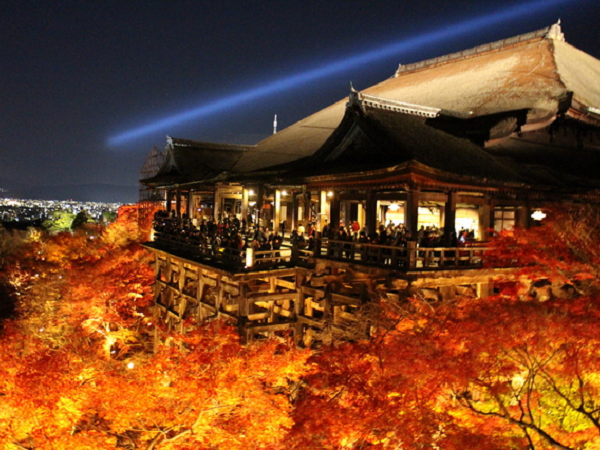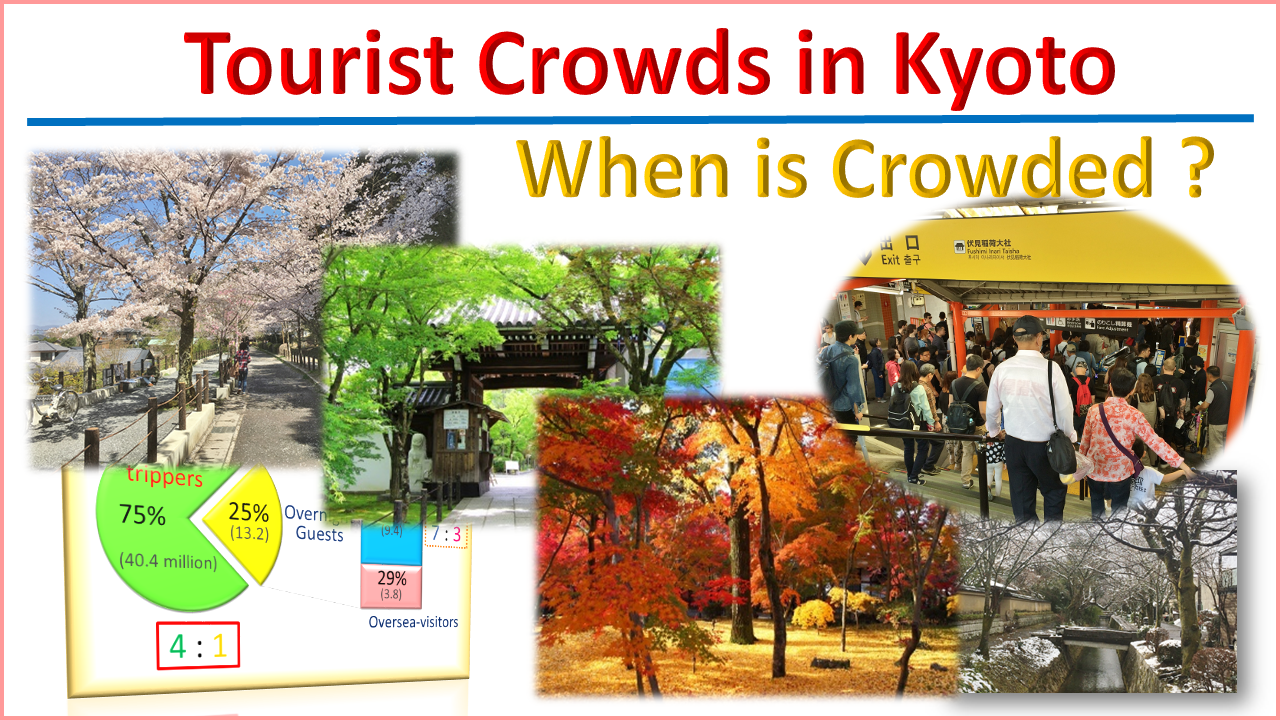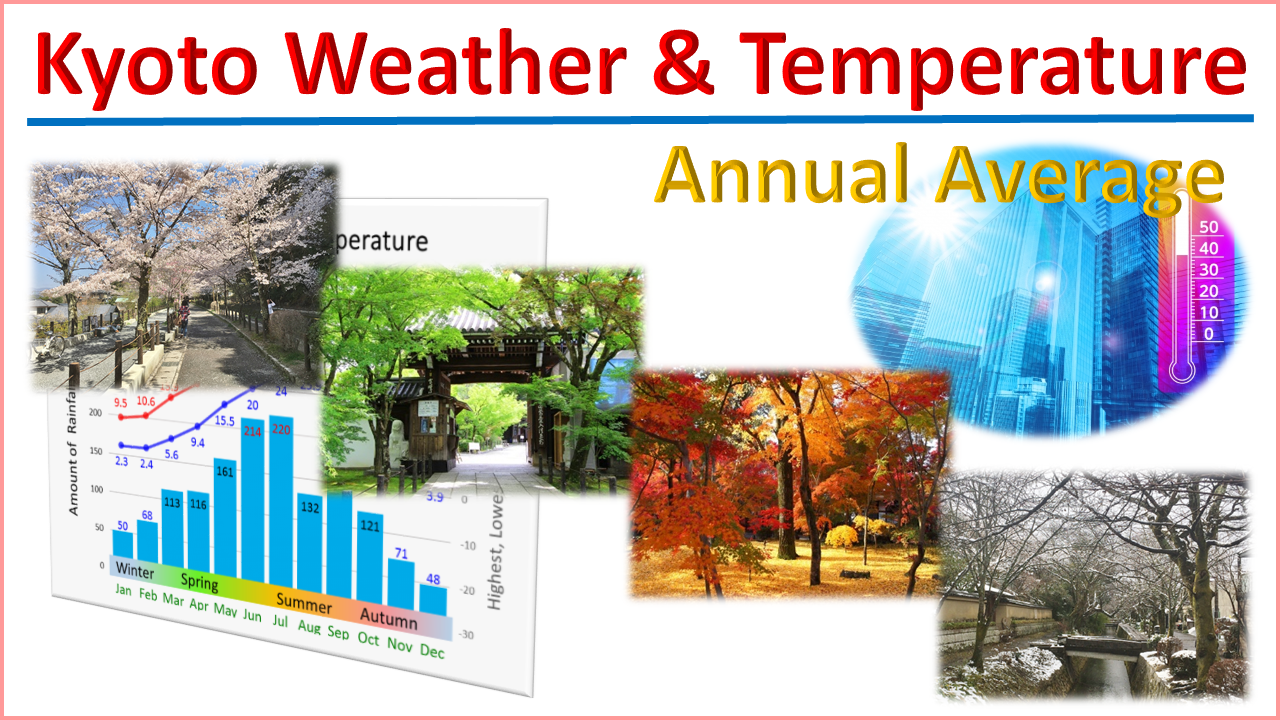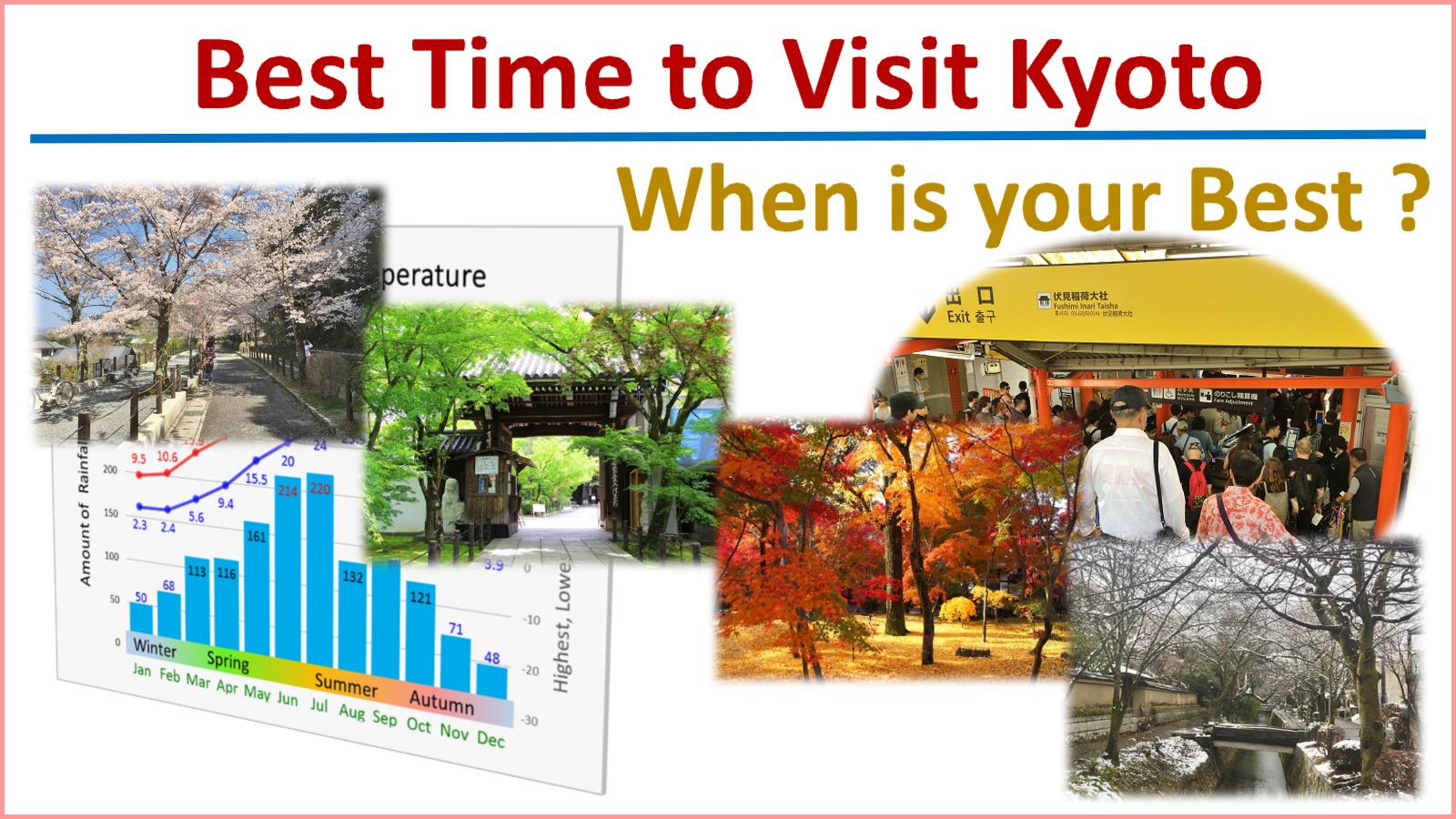Travel Info : What Seasonal Highlights ? When Famous Events & Festivals in Kyoto ?
Advertisements
2. Informations & Schdules
2-1 spring
2-2 summer
2-3 autumn
2-4 winter
1. Overview
I’d like to Know seasonal highlights in Kyoto, including famous events and festivals.
OK, I’d like to show you the detailed schedule and information about that.
Kyoto has, you might know, beautiful four different seasons.
Actually, each season has each a lot of attractive events in Kyoto.
This time, I’ll show you some of the major festivals and events, including seasonal highlights for tourists.
The drawing below is the schedules of each famous festival and event.

Actually, the date of Aoi, Gion and Jidai festivals and bonfire event is fixed.
On the other hand, the dates of Illumination events are a little changed every year.
Now, let’s check the detailed informations and schedules by season at the following section.
2. Information & Schdule
2-1 spring
«Higashiyama area illuminated»
(10 days around mid March)
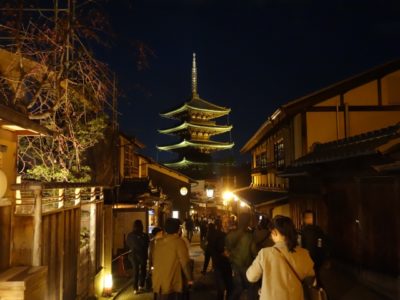

Higashiyama area is between Heian Jingu Shrine and Kiyomizu Temple.
The event of Higashiyama area illumination, called “Hanatoro” in Japanese, is held every mid March since 2003.
“Hanatoro” means lantern illuminated streets.
You can enjoy walking with more than 2,500 lanterns along the 5 km streets between Kiyomizu-dera temple and Shoren-in temple (to the south of Heian Jingu shrine)
This event is very popular, over 1 million people visit just for the 10 days.
Illumination hours is 6:00 p.m. to 9:00 p.m.
Moreover, temples and shrines within the Higashiyama area are also lit up, such as Kiyomizu-dera, Koudaiji temple, Yasaka-no-to pagoda (Hokanji temple), Koudaiji temple, Yasaka-jinja Shrine.
For Shoren-in temple, please take Kyoto City Subway Tozai line, and get off at Higashiyama Sta.
If you want to know how to get to other following sopts, click here ! (Kiyomizu temple, Yasaka Jinja shrine (Gion area))
«Cherry Blossoms» (late March to early April)
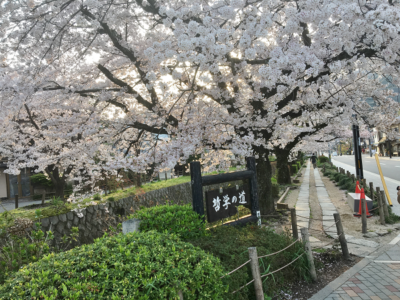

Especially around Mar. 25th to Apr. 5th, cherry blossoms are likely to be bloomed.
Not only at famous spots for oversea visitors such as Kiyomizu temple, Nijo Castle, Arashiyama and Gion area (Yasaka Jinja Shrine), but also at the entire city such as every usual river side and usual park are full of cherry blossoms.
The timing of the full bloom depends on the variety of cherry blossom. For example, Hirano Jinja shrine near Kinkakuji temple has about 60 kinds of cherry blossom trees, and you can enjoy mid March to mid April.
In addition, at Kuramadera temple and Ohara Sanzenin temple, located in the north of Kyoto city, cherry blossoms are fully bloomed around mid April because of low temperature.
I like cherry blossoms along “Philosopher’s Walk” (pictures), running between Ginkakuji temple and Nyakuoji shrine near Eikando, Nanzenji temple. The cherry blossoms are bloomed over 1.8 km of the path, which is along a quaint watercours.
If you want to know how to get to, click the followings ! (Philosopher’s Walk, Ginkakuji temple, Eikando temple and Nanzenji Temple)
«Aoi festival» (May 15h)
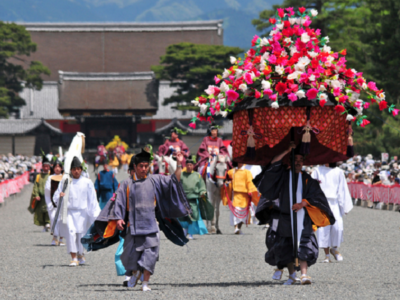
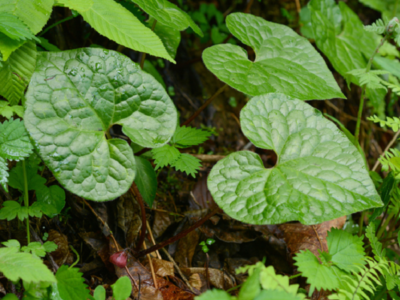
Aoi festival, one of the three major festivals of Kyoto, is the annual event of Kamigamo shrine and Shimogamo shrine, that are said to be the oldest in Kyoto.
This festival is held on May 15th every year.
The parade is held from Kyoto imperial palace to Kamigamo shrine via Shimogamo shrine (total length of 8 km). The parade is so elegant becouse 500 people dressed as nobles and servants of Heian Era. about 1,000 years ago.
“Aoi” means a heart shaped leaf which is a symbol of Kamigamo and Shimogamo shrine.
The parade starts from Kyoto imperial palace at 10:30 a.m., and arrives at Shimogamo Shrine at 11:40 a.m..
And it starts from Shimogamo Shrine at 2:20 p.m. again, and finally arrive at Kamigamo shrine at 3:30 p.m..
For Kyoto Imperial Palace, please take Kyoto City Subwy Karasuma line, and get off at Marutamachi Sta.
For Shimogamo Jinja Shrine, please take Keihan Railway, and get off at Demachiyanagi Sta.
«Green maple leaves» (late April to August)


Lately, it’s getting popular to go sightseeing for green maple leaves in Japan, instead of autumn leaves which cause overflowing with people.
Those green maple leaves are especially beautiful during the season between late spring (mid May) and early summer (early June).
This season is also very nice because it is the just time after Japanese spring holidays and before rainy season, so that even famous spots for autumn leaves in fall are less crowded ! Moreover, the climete is very nice, too.
You can see and feel the beauty not only at originally major spots for tourists such as Ginkakuji temple, Kiyomizu temple and temples in Arashiyama area, but also at the spots especially famous for autumn leaves such as Eikando temple, Nanzenji temple, Kitano-tenmangu shrine, Tofukuji temple, Toji temple and so on.
If you want to know how to get to, click the followings ! (Kiyomizu temple, Eikando temple, Nanzenji temple, Arashiyama area and Ginkakuji temple)
2-2 summer
« Gion festival » (mainly July 17th, 24th)
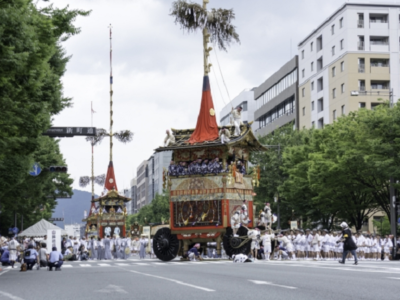
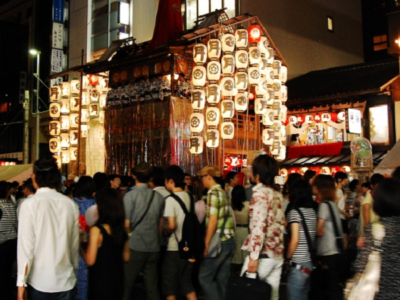
Gion festival has a history of over 1100 years, and is held by Yasaka Jinja Shrine located in Gion area.
This festival is one of the three major festivals of not only Kyoto but also Japan.
Actually, it is held for entire month of July.
Above all, on July 17th and 24th, you can see the parade of “Yamahoko“, which is the decorated floats, around city-center, next to Gion area.
In total, 23 Yamahokos on July 17th, and 10 Yamahokos are paraded.
It is so beautiful and is said to be “walking museums“.
These Yamahokos don’t use even one nail, that’s amazing !
Three nights before the each parade day, we call them “Yoiyama” which is sort of the eve of the festival, you can also enjoy the Yamahoko lit by many Japanese lamps. Especially, only the nightes of July 15th and 16th, the city-center area becomes vehicle-free, and you can enjoy a lot of food stalls. Please note that those two nights are very very crowded and tend to be very humid and hot.
The Yamahoko parade of July 17th starts at 9:00 a.m., and that of July 24th starts at 9:30 a.m.
To see Yamahoko parade, Hankyu Railway Kyoto-Kawaramashi Sta. & Karasuma Sta., Kyoto City Subway Shijo Sta. & Kyoto Shiyakusho-mae Sta., and Keihan Railway Gion-Shijo Sta. are convenient.
To visit Yoiyama, Kyoto City Subway Karasuma Sta. or Karasuma-Oike Sta., and Hankyu Railway Shijo Sta. are convenient.
«Farewell Bonfire Event on Mt. Daimonji» (Aug. 16th)

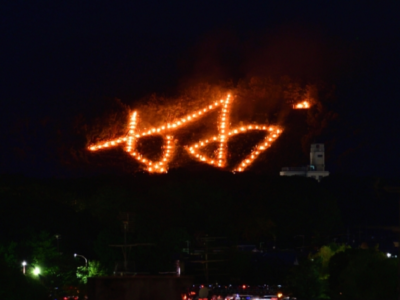
The bonfire event, we call it “Okuribi“, is the ceremony to send ancestors’ spirits back on the last day of Japanese summer holidays called “Obon”.
(“Obon” is s traditional Japanese event to welcome the spirits of ancestors.)
The forms of the bonfire are Kanji characters and the shape of a thing, lit on five mountains in Kyoto.
The origin of the bonfire is uncertain, but is said that it bigan over 400 years ago. General people preserve for centuries.
The event starts at 8:00 p.m. from Mt. Daimonji to other mountains every 5 minutes in order, and is held for 30 minutes.
Over 100 thouthand peaple come and see the event, so I recommend you select the spot near railway station to move smoothly after the event.
The following is the recommended spot near railway station.
♦ (Mt. Daimonji) : Keihan Railway & Eizan Railway Demachiyanagi Sta., Kyoto City Subway Kitaoji Sta.
♦ (Mt. left Daimonji) : Randen Kitano-Hakubaicho Sta., Nishioji-Sanjo Sta., JR Sagano line Enmachi Sta., Kyoto City Subway Tozai line Nisioji-Oike, Hankyu Railway Saiin Sta.
♦ (torii) : Hankyu Railway Matsuo-Taisha Sta., Arashiyama Sta., Randen Arashiyama Sta.
♦ (myo) : Kyoto City Subway Karasuma line Matsugasaki Sta.
♦ (hou) : Eizan Railway Shugakuin Sta.
2-3 autumn
«Autumn Leaves» (early November to early December)
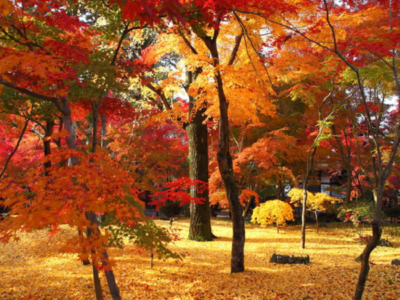
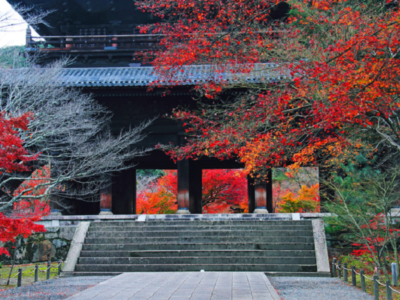
In autumn, Kyoto are full of people looking for the beauty created by historic architectures and autumn leaves.
You can see and feel the beauty not only at originally major spots for tourists such as Nijo castle, Kinkauji temple, Ginkakuji temple, Kiyomizu temple and Arashiyama area, but also at the spots especially famous for autumn leaves such as Eikando temple, Nanzenji temple, Kitano-tenmangu shrine, Tofukuji temple and many other places.
You can visit some temples & shrines at night during the season, such as Kiyomizu temple, Eikando temple, Kitano-tenmangu shrine, Kodaiji temple (near Kiyomizu), Toji temple (near Kyoto Sta.) and so on. The architectures and trees are lit up, so you can feel completely different beauty of the night scenery.
The weekends & holidays of this season are very very very crowded. So, please take trains and walk, rather than buses which must be wasting time to move due to the congestion of the road and the passengers.
It is said that “early morning” is recommended because of relatively less crowded than the daytime.
For example, Kiyomizu temple (6:00 a.m.), Toji temple (5:00 a.m.), Shimogamo jinja shrine (6:30 a.m.), and Kyoto Imperial Palace (24 hours) open from early morning.
If you want to know how to get to, click the followings ! (Kiyomizu temple, Eikando temple, Nanzenji temple, Arashiyama area, Nijo Castle, Kinkakuji temple and Ginkakuji temple)
«Jidai festival» (Oct. 22nd) postponed due to rain
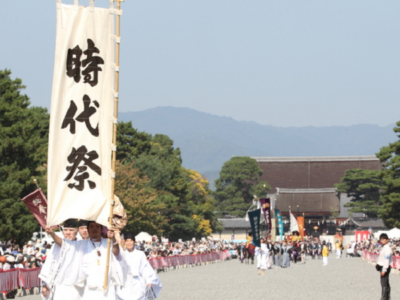
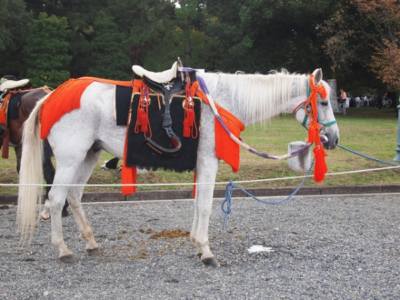
Jidai festival, one of the three major festivals of Kyoto, is the annual event of Heian Jingu shrine built in 1895 in commemoration of the 1100th anniversary of the foundation of Heian Capital.
“Jidai” means era.
This festival is held on October 22nd every year.
The parade is held from Kyoto imperial palace to Heian Jingu shrine. It is so splendid becouse over 2,000 people dressed in the old costumes from 8 different eras in Japanese history. The procession is about 2 km, very long !
All of those costumes are made with Kyoto’s traditional techniques, and real. That’s amazing !
The parade starts from Kyoto imperial palace at 12:00 p.m., and arrives at Heian Jingu Shrine at 2:30 p.m..
For Kyoto imperial palace, please take Kyoto City Subway Karasuma line, and get off at Marutamachi Sta.
For Heian Jingu Shrine, please take Kyoto City Subway Tozai line, and get off at Higashiyama Sta.
2-4 winter
«Arashiyama area illuminated» (10 days around mid December)

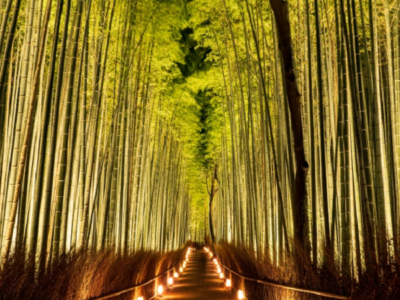
The event of Arashiyama area illumination, also called “Hanatoro” in Japanese, is held every mid December since 2005.
“Hanatoro” means lantern illuminated streets.
You can enjoy walking with more than 2,500 lanterns along the total length of 5 km streets among Arashiyama area.
Morover, Togetsukyo Bridge and Bamboo Forest are illuminated, so beautiful.
This event is also as very popular as Higashiyama area illumination, over 1 million people visit just for the 10 days.
Illumination hours is 5:00 p.m. to 8:30 p.m.
If you want to know how to get to Arashiyama, click here.
3. Summary
